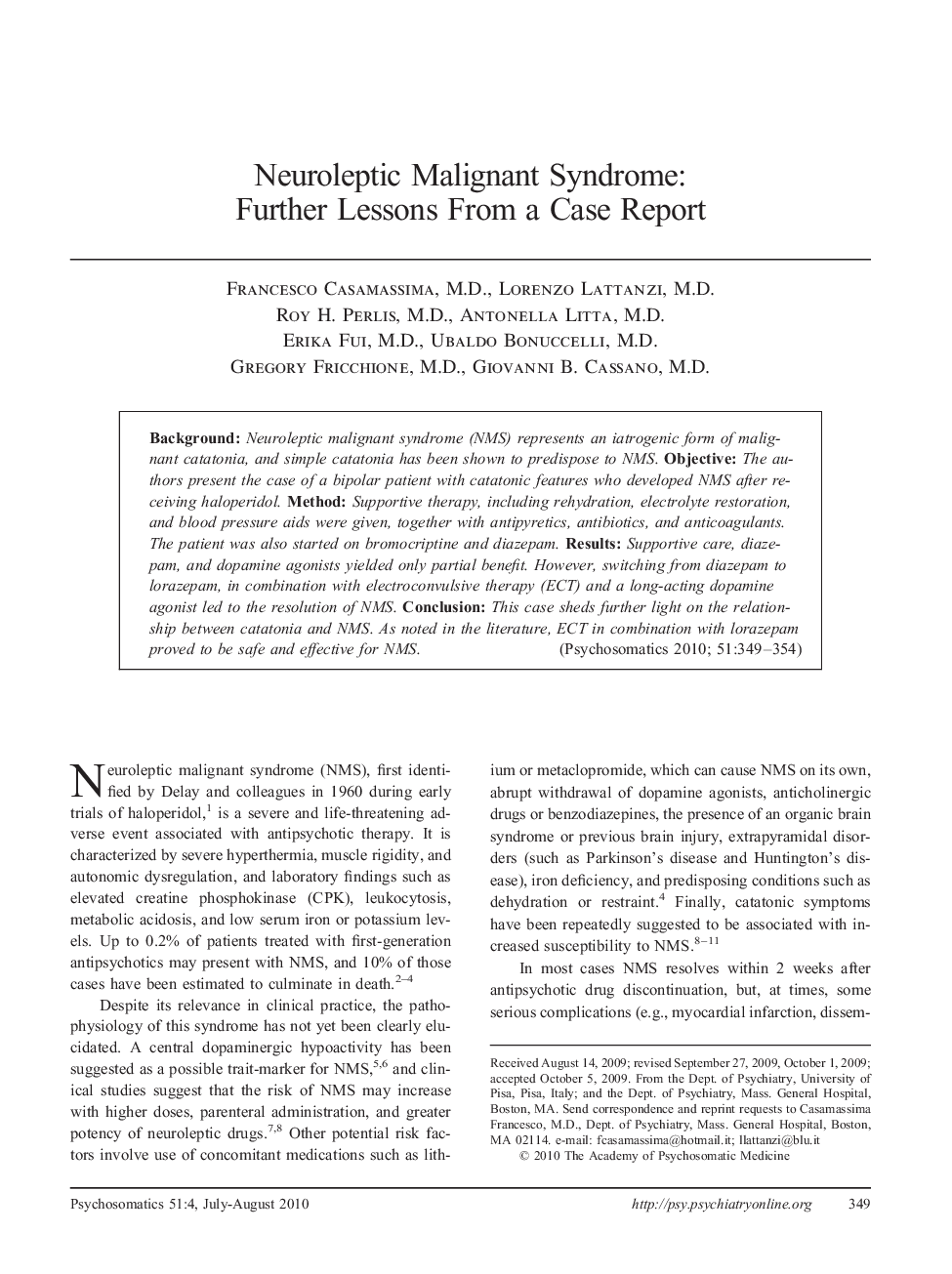| Article ID | Journal | Published Year | Pages | File Type |
|---|---|---|---|---|
| 339334 | Psychosomatics | 2010 | 6 Pages |
BackgroundNeuroleptic malignant syndrome (NMS) represents an iatrogenic form of malignant catatonia, and simple catatonia has been shown to predispose to NMS.ObjectiveThe authors present the case of a bipolar patient with catatonic features who developed NMS after receiving haloperidol.MethodSupportive therapy, including rehydration, electrolyte restoration, and blood pressure aids were given, together with antipyretics, antibiotics, and anticoagulants. The patient was also started on bromocriptine and diazepam.ResultsSupportive care, diazepam, and dopamine agonists yielded only partial benefit. However, switching from diazepam to lorazepam, in combination with electroconvulsive therapy (ECT) and a long-acting dopamine agonist led to the resolution of NMS.ConclusionThis case sheds further light on the relationship between catatonia and NMS. As noted in the literature, ECT in combination with lorazepam proved to be safe and effective for NMS.
